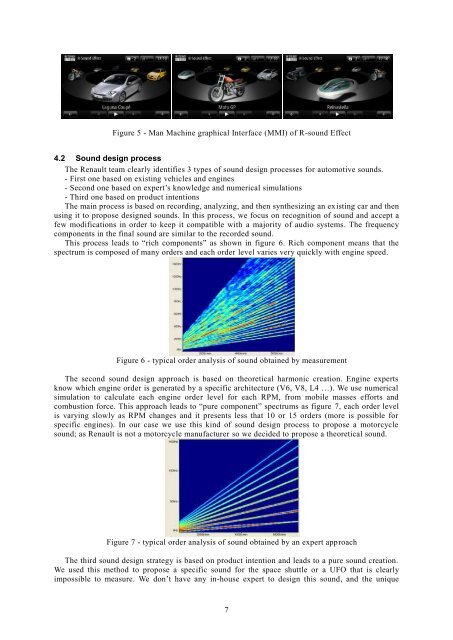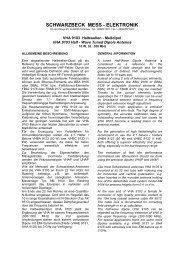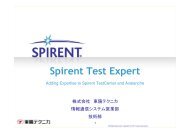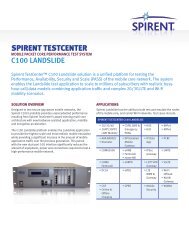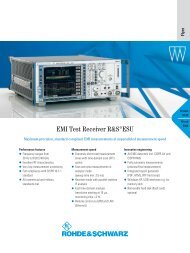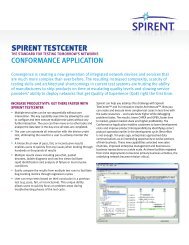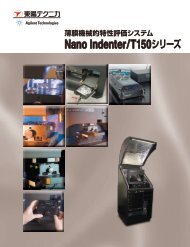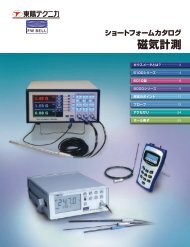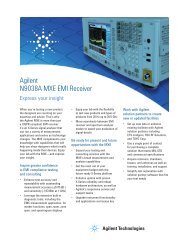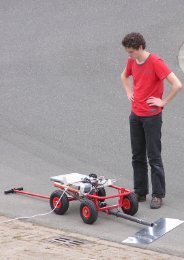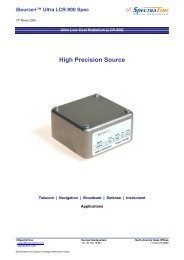Implementing digital engine sound enhancement techniques to ...
Implementing digital engine sound enhancement techniques to ...
Implementing digital engine sound enhancement techniques to ...
You also want an ePaper? Increase the reach of your titles
YUMPU automatically turns print PDFs into web optimized ePapers that Google loves.
Figure 5 - Man Machine graphical Interface (MMI) of R-<strong>sound</strong> Effect4.2 Sound design processThe Renault team clearly identifies 3 types of <strong>sound</strong> design processes for au<strong>to</strong>motive <strong>sound</strong>s.- First one based on existing vehicles and <strong>engine</strong>s- Second one based on expert’s knowledge and numerical simulations- Third one based on product intentionsThe main process is based on recording, analyzing, and then synthesizing an existing car and thenusing it <strong>to</strong> propose designed <strong>sound</strong>s. In this process, we focus on recognition of <strong>sound</strong> and accept afew modifications in order <strong>to</strong> keep it compatible with a majority of audio systems. The frequencycomponents in the final <strong>sound</strong> are similar <strong>to</strong> the recorded <strong>sound</strong>.This process leads <strong>to</strong> “rich components” as shown in figure 6. Rich component means that thespectrum is composed of many orders and each order level varies very quickly with <strong>engine</strong> speed.Figure 6 - typical order analysis of <strong>sound</strong> obtained by measurementThe second <strong>sound</strong> design approach is based on theoretical harmonic creation. Engine expertsknow which <strong>engine</strong> order is generated by a specific architecture (V6, V8, L4 …). We use numericalsimulation <strong>to</strong> calculate each <strong>engine</strong> order level for each RPM, from mobile masses efforts andcombustion force. This approach leads <strong>to</strong> “pure component” spectrums as figure 7, each order levelis varying slowly as RPM changes and it presents less that 10 or 15 orders (more is possible forspecific <strong>engine</strong>s). In our case we use this kind of <strong>sound</strong> design process <strong>to</strong> propose a mo<strong>to</strong>rcycle<strong>sound</strong>; as Renault is not a mo<strong>to</strong>rcycle manufacturer so we decided <strong>to</strong> propose a theoretical <strong>sound</strong>.Figure 7 - typical order analysis of <strong>sound</strong> obtained by an expert approachThe third <strong>sound</strong> design strategy is based on product intention and leads <strong>to</strong> a pure <strong>sound</strong> creation.We used this method <strong>to</strong> propose a specific <strong>sound</strong> for the space shuttle or a UFO that is clearlyimpossible <strong>to</strong> measure. We don’t have any in-house expert <strong>to</strong> design this <strong>sound</strong>, and the unique7


